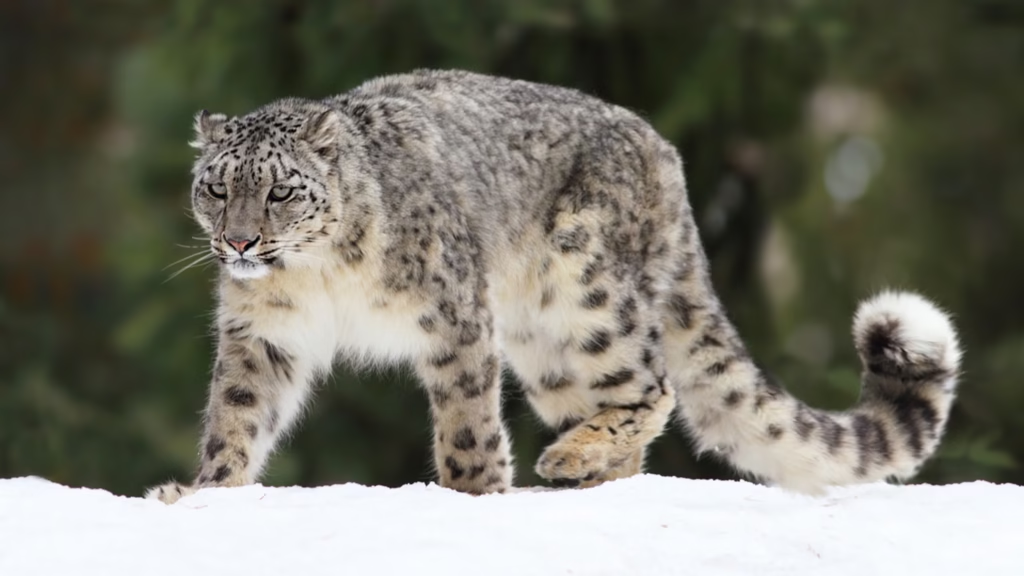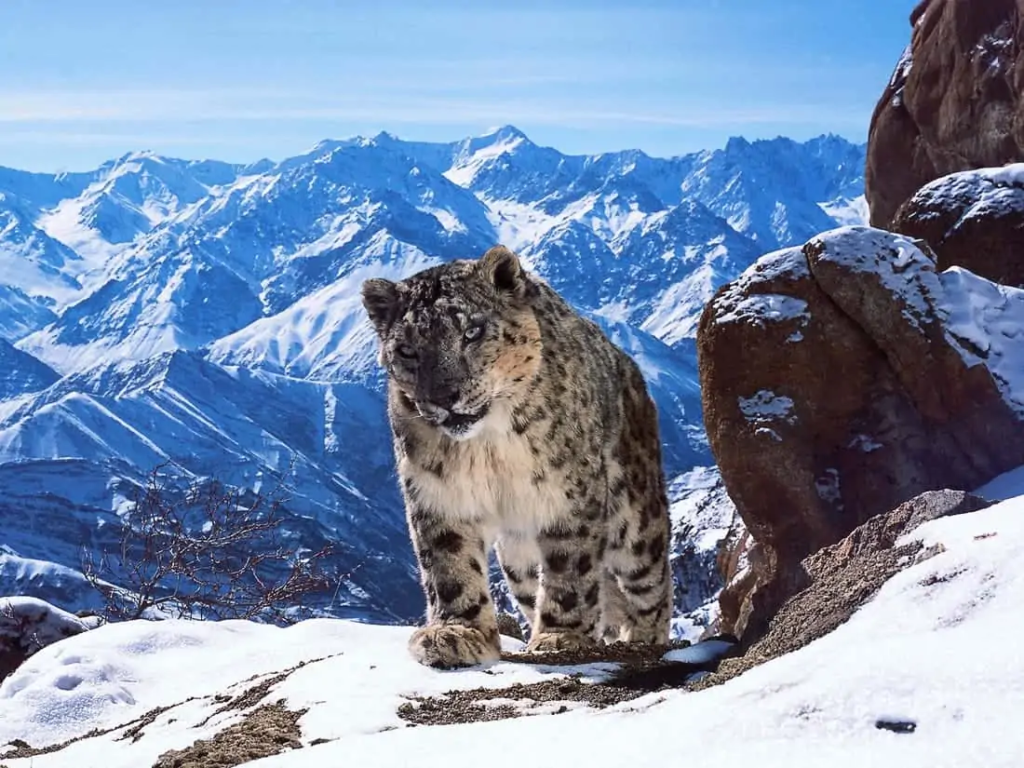Snow leopards are one of the most mysterious and elusive big cats in the world.
Known for their stunning spotted coats and their ability to thrive in some of the harshest environments on Earth, these cats have evolved a number of unique adaptations that help them survive in the rugged mountains of Central Asia. One of the most noticeable features of a snow leopard is its extremely long, thick tail. But why do snow leopards have such long tails? In this article, we’ll explore the reasons behind this fascinating adaptation and how it benefits the snow leopard in its daily life.
1. Balance and Agility
Snow leopards are incredible climbers, and their long tail plays a critical role in helping them navigate steep and rocky terrain. Their environment is filled with tall, jagged mountains and cliff faces, and snow leopards often have to scale these surfaces in search of food or shelter. The long tail acts as a counterbalance when the snow leopard is climbing or leaping from rock to rock. Much like how tightrope walkers use a long pole to help maintain their balance, the snow leopard uses its tail to help stabilize its body as it moves through difficult landscapes.
When the snow leopard is perched on a narrow ledge or moving along a precarious cliff, its tail shifts and adjusts to keep its body balanced. This is especially important when the cat is making quick or unexpected movements, as it prevents the leopard from falling or losing its footing.
2. Thermal Regulation in Cold Environments
The snow leopard’s habitat is one of the coldest in the world. They live in high-altitude regions, where temperatures can drop well below freezing, especially in winter. To survive these freezing conditions, snow leopards need to conserve body heat. Their long, thick tail helps with this by acting as a natural blanket. When resting, a snow leopard can curl its tail around its body to provide extra warmth, keeping its core temperature stable in the harsh conditions.
Additionally, the tail is covered in dense fur, which helps to trap heat. Snow leopards have specially adapted fur that not only protects them from the cold but also helps camouflage them in their snowy surroundings. The tail’s fur provides another layer of insulation, ensuring that the snow leopard remains warm even in the most frigid weather.
3. Communication and Expression
Though snow leopards are generally solitary creatures, they do communicate with each other, especially during mating season or when marking their territory. The long tail can play a role in this communication, serving as a visual signal to other snow leopards. For example, when a snow leopard is excited or feels threatened, it may flick its tail or make specific movements to convey its emotional state. The tail is highly expressive and can indicate the animal’s mood or intentions.
In addition, the tail can also be used to mark territory. Snow leopards have scent glands near the base of their tail, and by rubbing their tail against trees, rocks, or other surfaces, they can leave their scent behind. This helps other snow leopards recognize the boundaries of their territory and avoid conflicts. The tail, therefore, serves both a practical and social function in the snow leopard’s life.

4. Hunting and Stealth
Snow leopards are exceptional hunters, and their ability to move stealthily through the snow and mountains is one of their most important survival skills. The long tail helps them with this stealth by allowing them to maintain balance and remain agile while sneaking up on prey. When stalking animals like blue sheep, ibex, or marmots, the snow leopard needs to be able to move quietly and efficiently.
The long tail also helps the snow leopard keep its body close to the ground, which is crucial for staying hidden from prey. By using their tail as a stabilizer, they can make small, precise movements that help them stay low and avoid detection. This stealth is essential for the snow leopard’s hunting strategy, as it relies on getting as close as possible to its prey before pouncing.
5. Symbol of Adaptation
The long tail of a snow leopard is not only a functional adaptation but also a symbol of how well this species has evolved to survive in extreme environments. In fact, many of the snow leopard’s physical traits, including its thick fur, broad paws, and long tail, are all linked to the harsh conditions it faces in the mountains. These adaptations have allowed the snow leopard to thrive in one of the most challenging habitats on the planet.
While many big cats have tails of varying lengths, the snow leopard’s tail is among the longest relative to body size. This is a clear example of how evolution has shaped the snow leopard’s body to meet the demands of its environment. The tail is just one of the many ways this incredible predator has adapted to its world.
6. Energy Conservation During Long Periods of Inactivity
In the wild, snow leopards often go for long periods without hunting or moving around much. During these times, they may rest or sleep for several hours or even days, depending on food availability. The long tail serves as a convenient cushion when the snow leopard is lying down. By wrapping its tail around its body or resting its head on it, the snow leopard can make itself more comfortable during these periods of inactivity.
The tail also helps the leopard conserve energy. By staying curled up in a warm and comfortable position, the snow leopard minimizes energy expenditure and stays ready for its next hunt.
The long tail of the snow leopard is much more than just a beautiful feature of this majestic cat; it is a vital adaptation that serves multiple important purposes. From helping with balance and agility while climbing and hunting, to providing warmth in freezing temperatures, to aiding in communication and territorial marking, the snow leopard’s tail is an essential part of its survival. This unique trait is a perfect example of how animals have evolved to meet the challenges of their environments, and it highlights just how incredible the snow leopard is as an apex predator in its mountain habitat.
As snow leopards continue to face threats from habitat loss and poaching, understanding their unique adaptations, like their long tail, can help raise awareness about the importance of preserving these remarkable creatures and their habitats.




